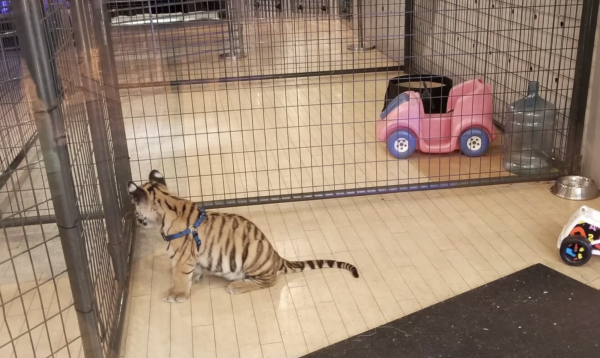Clothing Consciousness: Becoming aware of how we shop
Which of the following are fast fashion companies: SHEIN, Romwe, Zaful, H&M, Forever 21, Zara, Brandy Melville, or Aerie? The answer: all of them. For those interested in current fashion trends, you may have already heard the term “fast fashion,” as it has become the nickname for clothing made by brands concerned with staying on top of the newest style crazes. These clothes are made quickly and with little cost, encouraging consumers to shop frequently and almost in bulk from these brands. The companies somehow always know exactly which trends are in season. In a time like today, when fashion-centered accounts on apps like TikTok and Instagram seem to dictate what’s “in” by the week, having access to brands that sell precisely what you want is endlessly tempting.
I remember in middle school when graphic-print sweaters were starting to become more popular, and I saw them everywhere. When an advertisement for a seemingly perfect sweater from a store called Romwe popped up under a YouTube video, I decided to take it as my sign to get one. Little did I know what I was actually in for by shopping from a fast fashion brand. The material was so horrible and uncomfortable that I only ended up wearing the sweater twice, the first time out of determination to seem trendy and the second time in order to convince myself that I had not wasted my money. A month later, the sweater was at the bottom of a Goodwill clothing bin.
The same situation happens to thousands of online shoppers every day. This cheap fabric collects in heaps, infesting not only the backs of our closets but also the stores to whom we eventually donate the clothes. However, we continue to buy and buy in order to stay on top of the endlessly changing fashion trends without completely emptying our pockets. This cycle has begun to be called “throwaway culture,” because of its wasteful nature yet increasing popularity. But, one might ask, what is so bad about this new “culture”? We understand that waste is harmful, but in a general sense, that doesn’t endorse any action to be taken against it. The main issue with the inherent wastefulness of fast fashion brands is their contribution to environmental destruction. Take SHEIN, for example. With millions of buyers due to its unbelievably low prices on trendy clothes, the website’s low ethics are obvious. The brand is incredibly secretive about their mode of clothing production, likely meaning that either their workers suffer from poor conditions and even labor abuse, their waste and greenhouse gas emissions are horrible, or some combination of the two. But we have enough concrete information about the material of the clothes (cheap and full of microplastics), along with the sales statistics (a lot of sales), to infer its level of destruction to our planet (extremely high). If this trend of throwaway culture continues, more and more of this fabric will be put out into our environment, both taking away from natural resources and overflowing our landfills. SHEIN has become notorious for its association with fast fashion. Yet, people still buy from the brand constantly, despite knowing the low quality of the clothes and the environmental repercussions they have; the age of social media has engulfed our generation in a dangerous passivity to human rights and wastefulness, preferring overconsumption, in order to stay in style.
I implore you, the reader, the one who might have an H&M order on the way, to reconsider where you buy your clothes from. Thrifting has been rising in popularity in recent years, yet there still exists a taboo of buying second-hand. The temptation that online stores provide, of trendy clothes at one’s fingertips, can override any initiative of digging through racks of unwanted clothes to find a diamond in the rough. Trust me, even as someone who is addicted to thrifting, the lure has gotten the best of me at times, and the last two t-shirts I bought off of Amazon are now sitting in a bag, ready for donation. But in the end, the good absolutely outweighs the bad; thrifting is more fun, better for the environment, generally less expensive, and, in cases like the American Red Cross and Goodwill, help give back to the community. The treasure hunt for clothes is more fun and rewarding too, and allows you to come into contact with a wide variety of clothing types and styles which can help you expand your fashion comfort zone. Don’t give fast fashion brands what they want by falling for their enticing advertisements catered toward you: try your local thrift store for a more ethical alternative instead, which, from experience, ends up being better quality and cooler than what you might have had in mind initially.
I also want to be clear that I am not blaming those who simply cannot afford to shop more sustainably, as ethically produced clothes, by nature, tend to be more expensive. Everyone deserves the opportunity to wear what is popular and what fits their style. For this reason, I believe it is important for those who can afford it to shop sustainably, promoting these better brands and, more importantly, not promoting fast fashion stores. There are many more changes that could support sustainable fashion for all budgets, like ending the stigma around second-hand shopping, lessening the specificity of trends so that the market for in-style clothes can be expanded, or even by promoting the development of a personal style. Making original style choices would not only help bring inclusivity to fashion by not limiting where people can buy clothes from, but it would also support a more imaginative and genuine way of thinking. The opportunity for creative expression that we get through fashion should not box us in, but instead, let us represent our inner selves externally.
Finally, I encourage readers to check out goodonyou.eco, a website devoted to accurate information about fast fashion. Here, you can see the sustainability data on your favorite brands and find hundreds of alternative brands as well. It is important to check this website as well in order to know which of these brands are more ethical than others, so we can continue to shop as responsibly as possible when we don’t have a better option. In knowing the origins of our clothing and continuing to buy sustainably, we not only protect our environment and its inhabitants but also open our minds to a whole new realm of creative possibilities.

